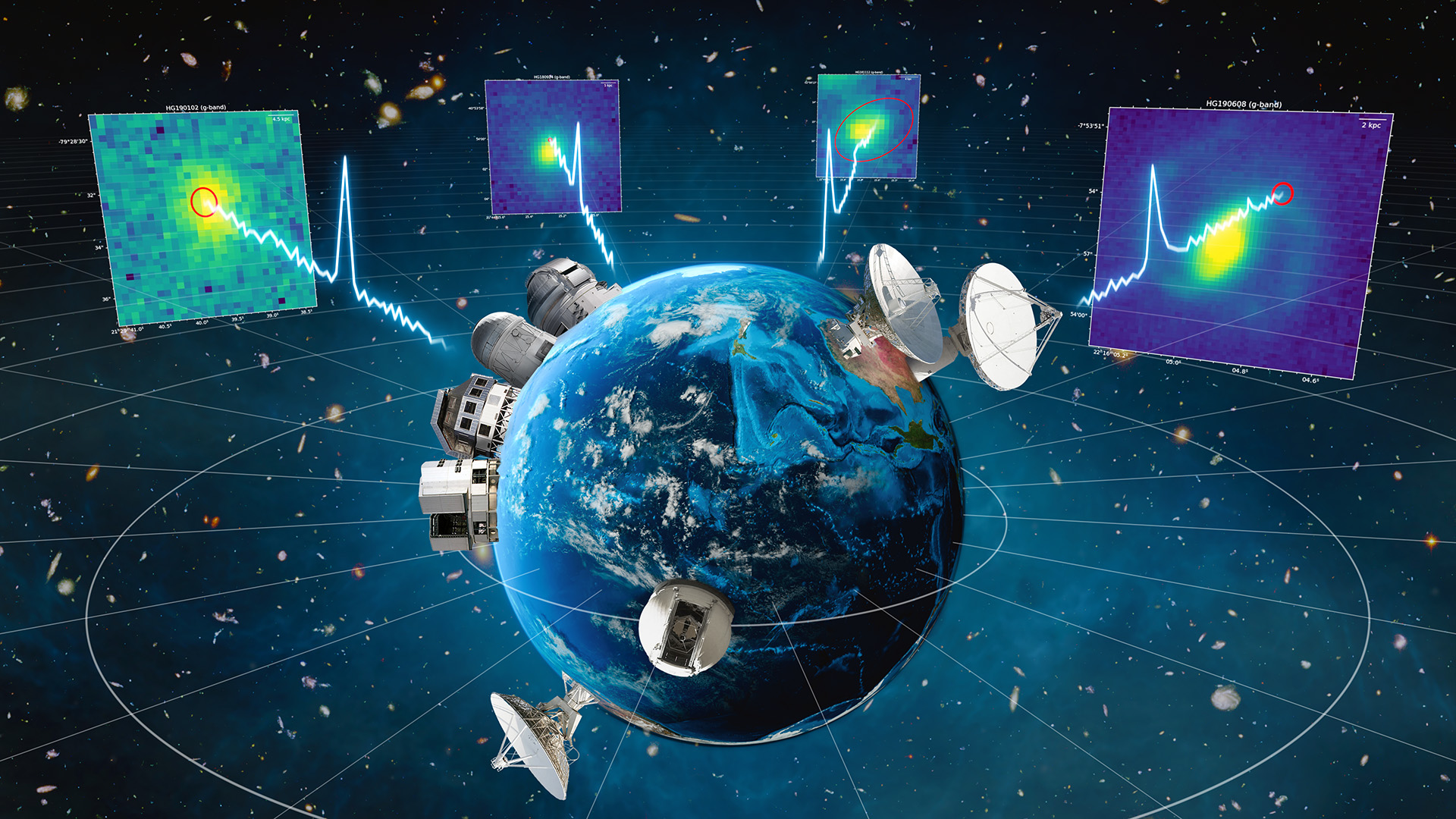Maunakea, Hawaii – Astronomers have peered into the home galaxies of fast radio bursts, ruling out supermassive black holes as a cause and bringing us a step closer to understanding the origins of these mysterious signals from outer space.
Fast radio bursts – the hottest topic in astronomy right now – were first detected in 2007, but astronomers are still working out what could make such a brief signal appear so bright. In just a millisecond, a single burst releases more energy than our Sun emits in 80 years.
An international team of astronomers led by Shivani Bhandari, an astronomer with CSIRO, Australia’s national science agency, has made a key breakthrough by zooming in on the precise location of four fast radio bursts and having a look around their ‘neighborhoods.’
The research, which includes data from W. M. Keck Observatory on Maunakea in Hawaii, published today in The Astrophysical Journal Letters.
“Just as video calls with colleagues show you their homes and give you a bit of an insight into their lives, looking into the host galaxies of fast radio bursts give us insights to their origins.”
An explanation of how astronomers determine the locations of fast radio bursts (FRBs). The video features one of the four FRBs Dr. Shivani Bhandari’s team studied. Credit: CSIRO
Using a specially designed transient detector on CSIRO’s ASKAP radio telescope in outback Western Australia, Bhandari and her team found the exact location of four fast radio bursts.
“These precisely localized fast radio bursts came from the outskirts of their home galaxies, removing the possibility that they have anything to do with supermassive black holes,” Bhandari said.
This first detailed study of the galaxies that host fast radio bursts rules out several of the more extreme theories put forward to explain their origins, getting us closer to knowing their true nature.
Co-author CSIRO’s Professor Elaine Sadler said these fast radio bursts could not have come from a super luminous stellar explosion or from cosmic strings.
“Models such as mergers of compact objects like white dwarfs or neutron stars, or flares from magnetars created by such mergers, are still looking good,” said Sadler.
The team conducted follow-up observations with the world’s largest optical telescopes. Using Keck Observatory’s Keck Cosmic Web Imager (KCWI) in collaboration with Gemini South, ESO’s Very Large Telescope, Magellan Baade, and LCOGT-1m, the researchers identified, imaged, and found the distances to the host galaxies.
Investigating if fast radio bursts favor a certain type of galaxy, the team found all four bursts came from massive galaxies that are forming new stars at a modest rate, very similar to our own Milky Way galaxy.
J. Xavier Prochaska of the University of California, Santa Cruz co-led the team responsible for the optical observations.
“Major advances for other transient events have been made by studying their home galaxies. We are optimistic that studies like ours will be just as vital,” Prochaska said.
Dame Jocelyn Bell Burnell, who as a postgraduate student in 1967 was the first to detect rapidly spinning neutron stars now known as ‘pulsars,’ praised the research.
“Positioning the sources of fast radio bursts is a huge technical achievement and moves the field on enormously,” Bell Burnell said. “We may not yet be clear exactly what is going on, but now, at last, options are being ruled out. This is a highly significant paper, thoroughly researched and well written.”
ABOUT KCWI
The Keck Cosmic Web Imager (KCWI) is designed to provide visible band, integral field spectroscopy with moderate to high spectral resolution formats and excellent sky-subtraction. The astronomical seeing and large aperture of the telescope enables studies of the connection between galaxies and the gas in their dark matter halos, stellar relics, star clusters, and lensed galaxies. Support for this project was provided by the Heising-Simons Foundation. Learn more at www.heisingsimons.org
ABOUT W. M. KECK OBSERVATORY
The W. M. Keck Observatory telescopes are among the most scientifically productive on Earth. The two 10-meter optical/infrared telescopes on the summit of Maunakea on the Island of Hawaii feature a suite of advanced instruments including imagers, multi-object spectrographs, high-resolution spectrographs, integral-field spectrometers, and world-leading laser guide star adaptive optics systems.
Some of the data presented herein were obtained at Keck Observatory, which is a private 501(c) 3 non-profit organization operated as a scientific partnership among the California Institute of Technology, the University of California, and the National Aeronautics and Space Administration. The Observatory was made possible by the generous financial support of the W. M. Keck Foundation.
The authors wish to recognize and acknowledge the very significant cultural role and reverence that the summit of Maunakea has always had within the Native Hawaiian community. We are most fortunate to have the opportunity to conduct observations from this mountain.


